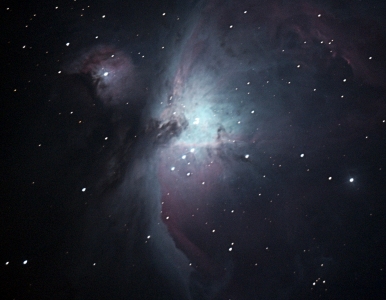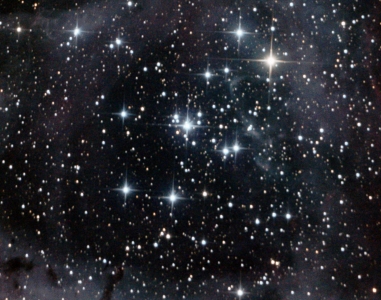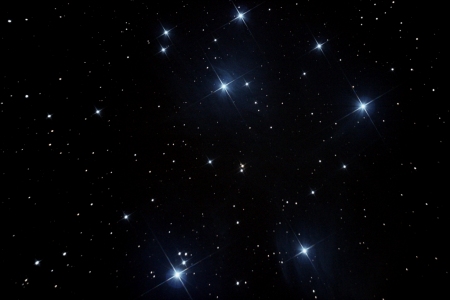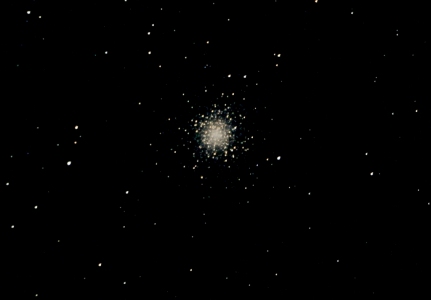

We Are Stardust
Only the most massive stars in the universe end their lives as core collapse supernovas and stars with requisite mass (above 25 solar masses) are about 1 in 10 million or less. These stars only shine for about 10 million years before ending in a bang. Their demise triggers star birth as shock waves sweep up and compress interstellar gas which becomes a stellar nursery giving birth to an open cluster of new stars. Some of these new stars are massive enough to eventually become supernovas in a short time again. The disk of our Milky Way is about 8 billion years old, so there has been time for a little less than 800 generations of this cycle of death and rebirth.


Stellar Nursery M42 (Great Orion Nebula) -- photo Rick Whitten Stellar Nursery NGC2244 (Rosette Nebula) -- photo Rick Whitten
The Big Bang synthesized only three elements -- Hydrogen 75%, Helium 25%, and a trace of Lithium. Thus is the composition of the oldest stars. 160 or so globular clusters orbit the disk of the Milky Way and were formed shortly after the Big Bang. There hasn't been much star formation in these compact clusters of stars since the first generation of O and B class stars quickly drove the interstellar gases away with their intense solar winds. In the disk, gases are driven away from stellar nurseries such as the Great Nebula in Orion and the Rosette Nebula, hollowing out evacuated bubbles around them. But the gases and dust persist in the disk, and star formation continues.


Gas driven away by O and B stars. M45 (Pleaides) -- photo Rick Whitten Globular Cluster devoid of star formation. M12 -- photo Rick Whitten
The stars and dust in the disk have been enriched with heavy elements due to generations of supernova nucleosynthesis. If not, we wouldn't exist. Carbon, Oxygen, Nitrogen, Phosphorous, Sulfur, Sodium, Magnesium, Calcium, Silicon, Chlorine, and Iron are blasted into the interstellar void when a massive star comes to a dramatic end. The raw materials for Earth and the life on it were forged in the center of stars more than 4.6 billion years ago. The hydrogen in us may be as old as the universe. But the other elements are newer. Since the disk of the Milky Way is only 8 billion and all of the elements of which we are made have existed for at least 4.6 billion years, we were made in less than 300 generations of supernovas.
There are more one quadrillion atoms in one human cell. Consider what history those atoms must have. Some of them could have been part of more than a hundred stars before they became part of you!